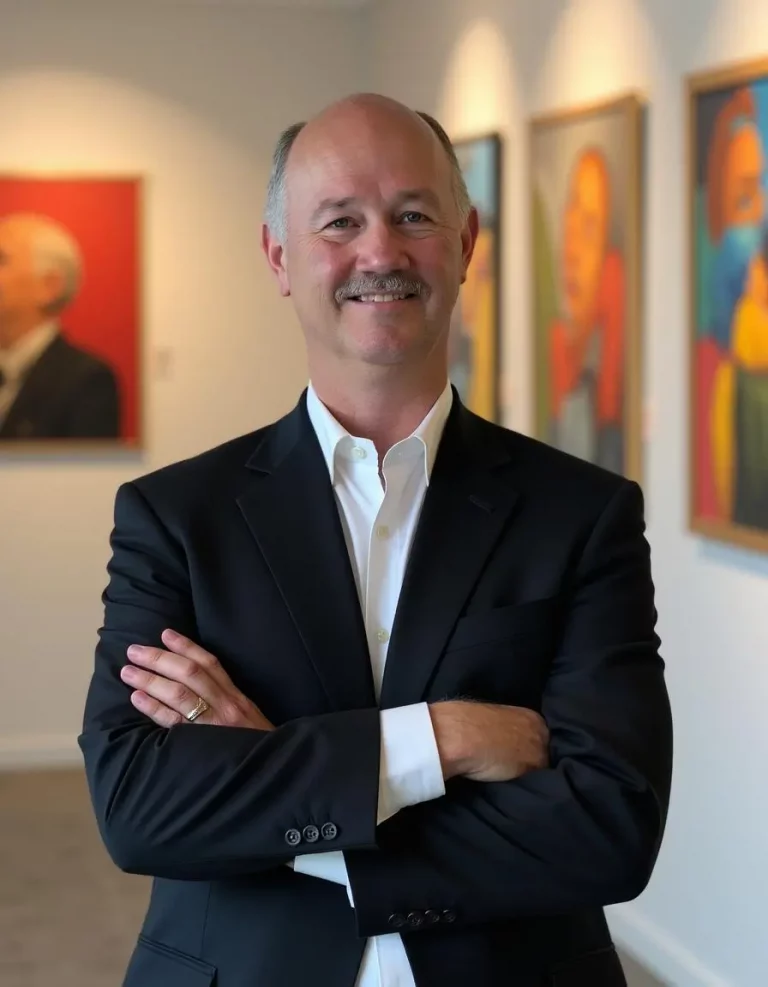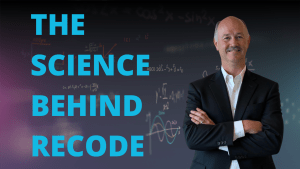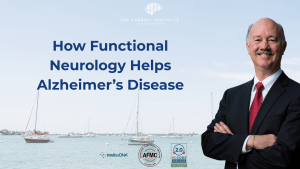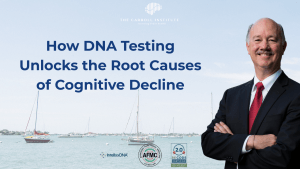Last Updated: October 2025
The human brain is one of the most adaptable organs in the body. Even after trauma such as a concussion, stroke, or other neurological injury, it has the remarkable ability to rewire and heal itself—a process known as neuroplasticity. At The Carroll Institute in Sarasota, Dr. Garland Glenn, DC, PhD, AFMC helps patients harness this potential through advanced Functional Neurology and targeted neurorehabilitation.
Traditional medicine often assumes that once neurons are damaged, recovery is limited. However, modern neuroscience has shown that the brain can form new pathways and compensate for lost function—sometimes even years after injury (NIH, 2012). This means recovery isn’t only possible—it’s expected when the right stimulation, oxygenation, and metabolic support are provided.
Understanding Neuroplasticity: How the Brain Rebuilds Itself
Neuroplasticity refers to the brain’s ability to change its structure and function in response to experience or injury. When one area of the brain is damaged, other regions can adapt by creating new neural networks. This process involves strengthening existing connections, forming new synapses, and improving communication between brain cells. Essentially, the brain can reprogram itself to perform old tasks in new ways.
For example, after a stroke that affects speech or motor control, nearby neurons can take over those functions with the right therapy. Similarly, following a concussion, targeted stimulation can reactivate sluggish circuits that control balance, focus, and reaction time. At The Carroll Institute, this rewiring process is guided through personalized exercises and neurotechnologies that stimulate these pathways back to life.
The Role of Functional Neurology in Brain Recovery
Functional Neurology is a clinical approach that focuses on improving brain communication rather than simply masking symptoms. Instead of treating an injury as static damage, it looks at which circuits have gone “offline” and how to bring them back online through precise activation techniques. This might include balance drills, eye movement retraining, sensory stimulation, or cognitive engagement exercises—all designed to reactivate dormant areas of the brain.
During your first Functional Neurology exam, Dr. Glenn identifies which areas of your brain are underperforming. From there, he designs a personalized program that targets those networks. Over time, this helps restore brain communication and improves overall function—even in patients who were told recovery wasn’t possible.
How Advanced Brain Technologies Accelerate Healing
While traditional rehabilitation focuses mostly on physical therapy, The Carroll Institute integrates advanced neurotechnologies to stimulate neuroplasticity more efficiently. Two of the most effective tools include:
- Neuronic Photobiomodulation Helmet — This device delivers red and near-infrared light to the cortex, increasing oxygenation and mitochondrial activity. It enhances energy production in neurons, which helps them repair and form new connections (Science Advances, 2022).
- Neurosensory Motor Integrator (SMI) — This visual-motor training system engages the brain’s eye-hand coordination networks to restore balance, focus, and reaction time. Patients use it during Functional Neurology sessions to rebuild precision and speed.
When combined, these two technologies work synergistically to enhance both metabolic and functional recovery. You can read more about how these tools help rebuild neural pathways in How Photobiomodulation and Sensorimotor Integration Therapy Rebuild Brain Pathways.
What Recovery Looks Like in Real Life
Patients often begin noticing improvements in balance, focus, and reaction time within weeks. For instance, someone recovering from a mild concussion may find that their dizziness subsides and their reading comprehension improves after targeted eye-movement exercises. Similarly, stroke survivors may regain fine motor control or hand coordination through repeated cerebellar activation drills.
Recovery is not always linear, but with consistency, neuroplastic changes continue to build. Even small improvements accumulate, leading to long-term restoration of function. Dr. Glenn’s combination of ReCODE-based metabolic therapy and Functional Neurology ensures the brain has both the energy and the stimulation it needs to repair effectively.
Why Time and Consistency Matter
Neuroplasticity thrives on repetition and precision. Each brain exercise or stimulation builds upon the last. That’s why patients at The Carroll Institute follow individualized care plans that evolve over time. Consistency allows neurons to strengthen their connections, making improvements more permanent. The more accurately and frequently the brain is challenged, the stronger those pathways become.
Additionally, lifestyle factors play a powerful role in supporting neuroplasticity. Diet, sleep, exercise, and stress management all influence how well your brain can rewire. For example, blood sugar imbalances, hormonal disruptions, or inflammation can limit progress—so Dr. Glenn integrates functional medicine to address these underlying issues in parallel with neurorehabilitation.
When the Brain Feels “Stuck”
Sometimes, patients feel that their recovery has plateaued. This doesn’t mean the brain has stopped healing—it usually means certain circuits need a new type of stimulation. For example, someone may regain motor strength but still struggle with focus or speech because a different region of the brain remains underactive. Adjusting therapy techniques can reignite progress. Functional Neurology allows for this flexibility, adapting treatments as the brain evolves.
In many cases, combining metabolic support, photobiomodulation, and sensorimotor training restarts the healing process. You can explore this concept further in What Happens During a Functional Neurology Session, which explains how these therapies are integrated into patient care.
The Carroll Institute’s Approach to Brain Repair
Dr. Glenn completed over 500 hours of training in Functional Neurology under Dr. Ted Carrick, the founder of the Carrick Institute. His approach blends evidence-based neurological rehabilitation with precision metabolic analysis. This combination not only helps restore lost brain functions but also strengthens overall resilience against future injury and cognitive decline.
Because The Carroll Institute is both a Functional Neurology and ReCODE-certified practice, patients benefit from the most comprehensive, root-cause-based brain recovery program available in Sarasota. Each plan is designed to address the physical, chemical, and emotional dimensions of healing—creating lasting improvement in brain performance and quality of life.
Take the Next Step Toward Recovery
If you or a loved one is struggling with the effects of concussion, stroke, or brain injury, don’t lose hope. The brain’s ability to adapt is extraordinary—and recovery is possible at any age. Book a Discovery Call with The Carroll Institute today to learn how personalized Functional Neurology can help rewire your brain and restore your confidence.
Sources
- Functional Neurology Overview — The Carroll Institute
- Transcranial Photobiomodulation Improves Cognition — Science Advances (2022)
- Neuroplasticity After Brain Injury — NIH / PubMed (2012)
- Neurosensory Motor Integrator — RKB Instruments
- Reversal of Cognitive Decline — Aging (2014)
Medically reviewed by Dr. Garland Glenn, DC, PhD, AFMC (Advanced Functional Medicine Clinician)
The Carroll Institute — Sarasota, FL
Learn more about Dr. Glenn’s background and credentials: About Dr. Garland Glenn
This content is for educational purposes only and does not replace personalized medical advice.

Dr. Garland Glenn, DC, PhD, IFM, AFMC
Founder & Clinical Director, The Carroll Institute — Sarasota, FL
Dr. Garland Glenn is a board-certified chiropractic physician and functional medicine practitioner specializing in cognitive health, neurodegeneration, and root-cause medicine. Certified as an AFMC (Advanced Functional Medicine Clinician) and Institute for Functional Medicine (IFM) trained, he has also completed over 500 hours of advanced training in Functional Neurology under Dr. Ted Carrick, founder of the Carrick Institute.
At The Carroll Institute, Dr. Glenn leads Sarasota’s only ReCODE-certified Functional Neurology program, helping patients reverse or prevent cognitive decline through the Bredesen ReCODE Protocol, neuroplasticity exercises, and personalized functional medicine care.
Learn more about his background and approach at About Dr. Garland Glenn.
– schedule now –
free discovery call
To help you get started, we offer a free 20-minute Discovery Phone Consultation. During this call, you will be able to talk with one of our Certified Brain Health Coaches about what going on with you or your loved one and find out if we can help. Please review our FAQs prior to scheduling your free call. We look forward to talking with you soon and helping you Save Your Brain.
(yes, it’s totally free!)
ReCODE® is a registered program developed by Dr. Dale Bredesen and licensed through Apollo Health. Dr. Garland Glenn is a certified ReCODE practitioner.



